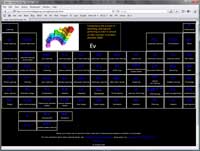Characteristics of Informal and Formal Learning Episodes
Allen Tough, a Professor Emeritus at the University of Toronto, focused his research on the adult's successful efforts to learn and change; and in particular, the 70% that is informal learning. During his research, he discovered that people spend an average of 15 hours per week learning on their own (Tough, 1999).
In the late 1970s, Patrick Penland, a library school professor at the University of Pittsburgh, became quite interested in Tough's research. He performed a survey in which a section of it pertains to why learners prefer to learn on their own, rather than in a class or course (Penland, 1977). The main reasons, in ranking order, are:
-
Desire to set my own learning pace.
-
Desire to use my own style of learning.
-
I wanted to keep the learning strategy flexible and easy to change.
-
Desire to put my own structure on the learning project.
-
I didn't know of any class that taught what I wanted to know.
-
I wanted to learn this right away and couldn't wait until a class might start.
-
Lack of time to engage in a group learning program.
-
I don't like a formal classroom situation with a teacher.
-
I don't have enough money for a course or class.
-
Transportation to a class is too hard or expensive.
What is interesting about the survey is that for the most part, it is not that learners lack resources or hate attending formal classes, for these items are at the bottom of the rankings, but rather they prefer being in charge of their own learning.
In addition, the top items in the rankings show that while learners prefer to take charge of their own learning, it does not mean that they enjoy solitary learning. Tough (1999) discovered that within each informal learning episode (where the primary motivation is to gain and retain certain knowledge and skill on a task or subject), the average learner interacts with an average of 10 people.
In fact, there may actually be more social interactions during informal learning episodes than there are in classrooms. Thus, we begin to get a picture of why blended learning became the next step in the elearning evolutionary process.
While the last two items on the survey pertain to a lack of resources, the first eight items show a desire to take charge (learner control) of one's own learning episodes. These eight survey items become design characteristics that control or influence most learning episodes:
| Design Characteristics | Survey Item |
|---|---|
| self-paced vs lock-step | Desire to set my own learning pace |
| personalized vs off the shelf | Desire to use my own style of learning |
| tactical vs strategic | I wanted to keep the learning strategy flexible and easy to change |
| empowerment vs defined processes | Desire to put my own structure on the learning project |
| complex vs simple | I didn't know of any class that taught what I wanted to know |
| just-in-time vs just in case | I wanted to learn this right away and couldn't wait until a class might start |
| flexibility vs rigid | Lack of time to engage in a group learning program |
| casual vs conventional | I don't like a formal classroom situation with a teacher |
The diagram below shows each learner control characteristic that leads to informal learning and its opposite — the corresponding designer control characteristic that leads to formal learning.
Note that these characteristics are not set in stone, but rather they are the norm. This is because formal and informal learning episodes borrow from each other, for example, some formal classrooms are self-paced and some informal learning episodes are off-the-shelf. Thus, each characteristic should be thought of more as a continuum, rather than a single-point.
With the focus nowadays turning more towards the learner, learning characteristics from both the informal and formal sides have naturally gotten more informal. At times, this has interesting consequences, for example, focusing on learning style preferences, which is often incorrect for the type of learning taking place, rather than a style that will actually enhance the learning (Clark, 2010).
Next Steps
Read or any of the other sections:
-
Characteristics of Informal Learning
Informal & Formal Learning are part of the Periodic Table of Agile Learning:
References
Clark, D.R. (2010). Metalearning and Learning Styles. Retrieved from http://bdld.blogspot.com/2010/01/metalearning-and-learning-styles.html
Penland, P.R. (1977). Self-planned learning in America. Pittsburgh: University of Pittsburgh.
Tough, A. (1999). Reflections on the study of adult learning. Paper presented at the 3rd New Approaches to Lifelong Learning (NALL) Conference: University of Toronto: Ontario Institute for Studies in Education. Retrieved January from http://www.oise.utoronto.ca/depts/sese/csew/nall/res/08reflections.pdf


